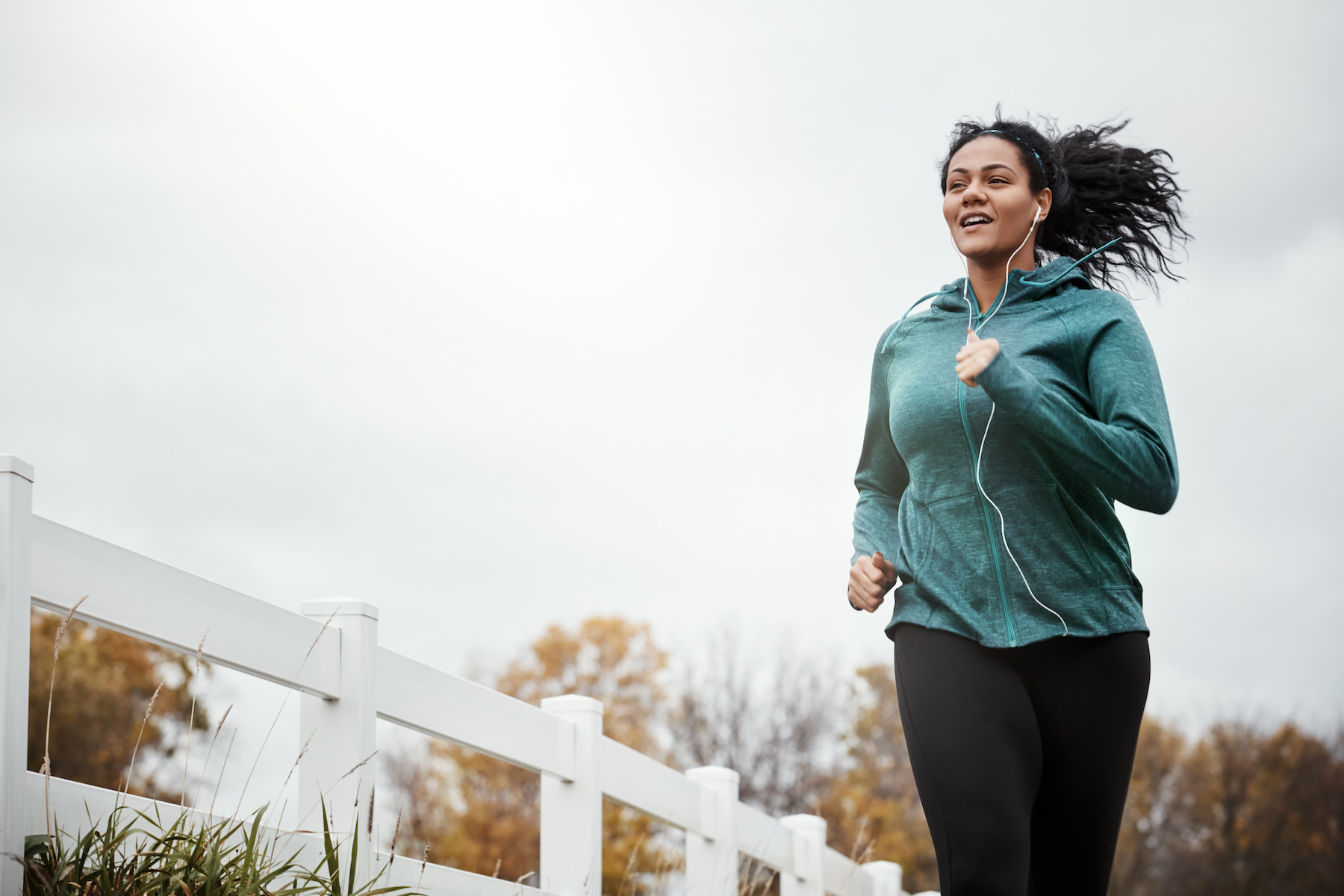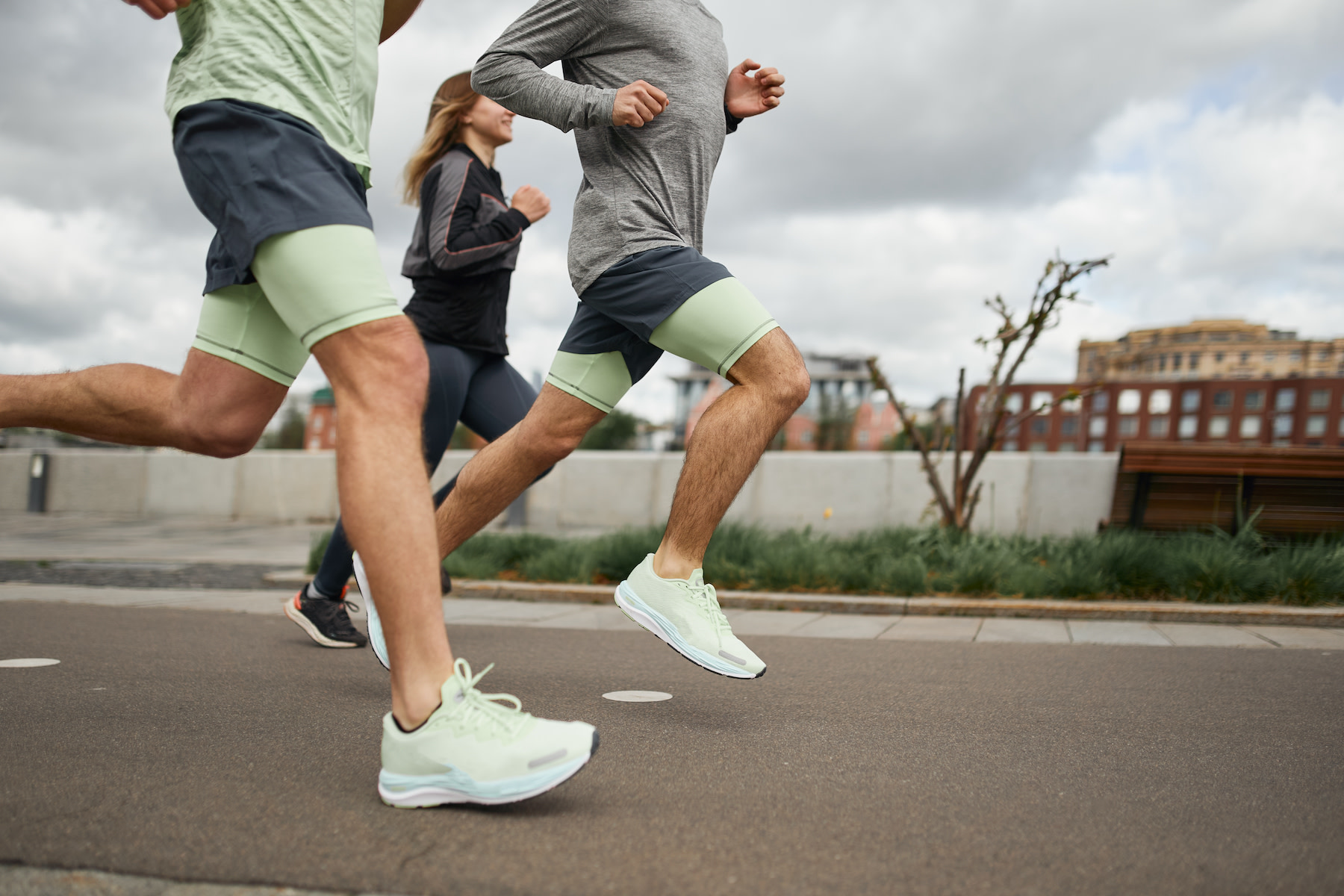
Mihajlo Ckovric via Stocksy
The 7 Key Muscles You Work While Running—and Why They Matter
Put more power into your miles by focusing on the right muscles.
By Jen Ator •
When you’re finishing an interval workout on the Peloton Tread, you may only be able to think about your pounding heart and your lungs gasping for air. But the muscles you work while running need just as much of your attention.
Discover more ways to reach your goals with Peloton
Running is undoubtedly an excellent aerobic workout, helping strengthen your heart muscle, improve your lung function, and increase circulation throughout your body. But it’s also a high-impact activity, taxing your muscles, ligaments, and tendons with each step.
“If you have a good understanding of how your body works during your running stride, you'll know exactly what to focus on when getting stronger,” says New York City-based physical therapist Victoria Sekely DPT, CSCS, the founder of Train Smart Run Strong. “This will help reduce your risk of any injury and can even improve your performance.”
Whether you’re a casual jogger or a serious sprinter, here are the exact muscles to pay attention to—and how to care for them.
Does Running Build Muscle?
In short, yes. A 2015 study published in Exercise and Sport Sciences Reviews found that aerobic exercise, such as running, can result in what’s known as muscle hypertrophy, or growth.
Faster runs, such as HIIT workouts, are a great way to increase muscle activation and indirectly strengthen your legs, says Peloton instructor Susie Chan. The same goes for runs with elevation changes. “Hills are the workout that really is going to help you build strength,” she says. “If you're doing hills consistently, you're going to build a bit of glute, hamstring, quad, and calf strength.”
But it’s important to keep in mind that running will only build muscle to a certain point. “If you're a beginner runner and just starting out, you will see some muscular changes in the beginning,” Sekely says. “But once you start running consistently, you won't see as much muscular build.” To put it simply: “If your goal is building muscle, strength training will do a lot more for you than running will.”

gradyreese/iStock / Getty Images Plus via Getty Images
7 Muscles That Running Works
To know what muscles are used while running, it’s helpful to understand the chain reaction of movement that’s happening with each step.
There are two main phases that make up your gait cycle, the repetitive motion of running. The first is the stance phase, when your foot makes contact with the ground. As you lift your foot into the air, and it travels forward, you enter the swing phase.
You engage different muscles during each phase of your gait cycle. Knowing which muscles you’re working can help increase your speed, distance, and even your enjoyment of running.
1. Hip Flexors
Three key muscles make up your hip flexors, which are located in the front of your hip. In the stance phase of your running stride, this muscle group flexes and extends to move your knee toward or away from your chest. While your hip flexors are crucial during every run, they’ll work the hardest during sprint and hill workouts—when your knee drive is more explosive.
You use these muscles a lot while running, making paying attention to them crucial. Spending hours a day sitting at a desk, behind the wheel of a car, or in front of the television can make your hip flexors weak and tight. And the tighter and shorter the hip flexor, the more your range of motion is reduced, and the shorter your stride becomes. This inhibits your natural gait and affects your form, hindering your running economy and potentially leading to pain and injury.
To avoid this, Sekely recommends working on strengthening your hip flexors at least two to three times a week. For example, lunges and knee raises are simple exercises you can add into your routine—without needing a ton of equipment.
2. Quadriceps
This group of four muscles in the front of your leg work together to bend and extend your knee, stabilizing and absorbing the impact as you land. Engaging them also increases the amount of push-off power you have, helping boost your speed.
By adding quad-strengthening exercises to your weekly routine, you’ll likely notice that your legs don’t fatigue as quickly, and you’ll build endurance more easily. Stronger quads can also help you bounce back faster between sessions and reduce your risk of nagging overuse injuries, such as runner’s knee.
While squats are a proven quad builder, single-leg exercises, such as walking lunges and step-ups, are even more critical for runners, as they better simulate the unilateral forces your body endures with each stride.

Sergey Mironov/Moments via Getty Images
3. Calves
Don’t forget about those all-important calves. “The calves—or the soleus muscle, specifically—produce the most amount of force during push-off compared to any other muscle in the body (relative to size),” Sekely says. “If your calves aren't ready to produce that force, push-off power will be reduced, which will either allow for compensation from other muscles—or worse, lead to injury.”
To strengthen your calves, consider adding calf raises to your weekly routine. Here’s how to do them:
For an added challenge, hold a dumbbell while performing this exercise.
Stand on your tiptoes with your heels lifted off the ground.
Press into your toes to engage your calves and raise your body a few inches upward. Pause at the top, with your toes spread wide and your ankles flexed.
Lower down slowly to your starting position. Repeat for 15 reps.
4. Hamstrings
“Hamstrings are the powerhouse when it comes to your running stride,” Sekely says. “They produce a lot of power and force to push you forward.”
Located in the back of your thigh, the hamstrings are three muscles that work together to bend the knee and pull your leg backward. Their main responsibility is force production in the push-off phase of your stride. If you want to run faster or sprint more efficiently, strong hamstrings are a necessity.
Diligently completing strength training exercises and regular stretches is essential to ensure your hamstrings are strong and flexible. (They’ll also help you avoid potential injuries.) To target your hamstrings, add Bulgarian split squats or good mornings into your routine.
5. Glutes
Like your hamstrings, the three muscles that make up your glutes play a key role in powering your body forward. The gluteus maximus helps extend your hip as you push off the ground, and the gluteus minimus and medius work together to shift your weight from side to side.
The gluteus minimus and medius also help stabilize your pelvis. And controlling the lower part of your trunk is essential to supporting your spine, knees, and feet. That’s why weak glutes can give runners so many problems. A 2012 study published in Clinical Biomechanics attributed knee pain to weak glutes amongst a group of runners. But it also goes beyond unwanted knee issues. A 2000 study published in the Clinical Journal of Sports Medicine found a glute-strengthening program to be effective at treating iliotibial (IT) band syndrome.
To strengthen this key muscle group, Sekely suggests adding step-ups, hip thrusts, and side planks to your routine two to three times a week.
6. Core
A strong core is a non-negotiable for runners. Our main abdominal muscles—the transverse abdominis and obliques—keep your upper and lower body connected. Keeping your core engaged will stabilize you while running, Chan says. That stability also spares your spine from feeling too much force with each stride.
But some workouts matter more than others. “Speed workouts will definitely require greater core activation because running at a faster speed requires more stability overall,” Sekely says. Running uphill, downhill, or for a longer period of time will require more core engagement.
To strengthen your core for upcoming runs, try the dead bug exercise. Here’s how to do it:
Lie on the floor on your back. Raise your arms in the air, perpendicular to the ground. Hover your knees in the air at a 90-degree angle. Your shins should be parallel to the floor.
Keeping your lower back pressed into the floor, engage your core, and lower your right arm to the floor while simultaneously straightening your left leg. Your left leg should be floating just above the floor when your right arm is fully extended.
Return to the starting position. Repeat 10 to 12 times on each side.
7. Upper Body
With so much focus on lower-body muscles, you may inadvertently overlook your upper body—and you wouldn’t be the only runner to do so. But the muscles in your arms (biceps and triceps), shoulders (deltoids and rotator cuff muscles), chest, and upper back (latissimus dorsi, trapezius, and rhomboids) can significantly affect your performance.
Your posture is a key part of your running economy. A collapsed chest limits your breathing capacity, which reduces the amount of oxygen and nutrients being delivered to your working muscles. Poor can also impact your speed and increase your risk of aches and pains (especially in your back, hips, and knees).
“When you're running, you want to make sure you maintain a solid upright posture,” Sekely says. “If you start to lean forwards or backwards, you lose a lot of that stability and power in your stride. Working your upper body helps you maintain that upright posture for longer.”
Exercises that work all angles of your upper body, such as bent-over rows and push-ups, can help boost your posture—and your running power.
This content is for informational and educational purposes only and does not constitute individualized advice. It is not intended to replace professional medical evaluation, diagnosis, or treatment. Seek the advice of your physician for questions you may have regarding your health or a medical condition. If you are having a medical emergency, call your physician or 911 immediately.





